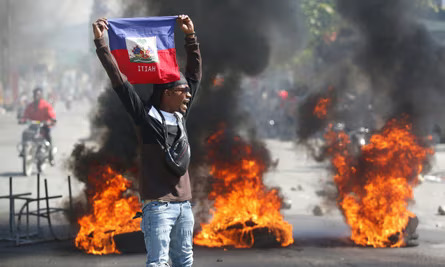In December 1914, the USS Machias anchored in Port-au-Prince, Haiti. Eight US marines disembarked, proceeding to the Banque National de la République d’Haïti (BNRH), where they seized $500,000 worth of gold, equivalent to $15 million today, belonging to the Haitian government.
This gold was packed into wooden crates and transported back to New York, where it was deposited in the vaults of the investment bank, Hallgarten & Co.
Established in 1880 through a concession granted to a French bank, the BNRH served as Haiti’s central bank, though it was ultimately a foreign private corporation. By 1920, it came under complete ownership of the American National City Bank. Despite its designation as Haiti’s central bank, the Haitian government incurred charges for every transaction, with substantial profits being funneled to Paris or New York.
Political instability in Haiti during the 1910s prompted Wall Street to demand action to safeguard its investments. Consequently, Washington deployed marines to intervene. This initial intervention escalated into a 19-year occupation marked by significant brutality, as described by Maj Gen Smedley Butler, a prominent figure in the American forces in Haiti.
Why Haiti Was Destined for Anarchy (Credits: The Guardian)
This forgotten incident of state-sanctioned bank robbery sheds light on Haiti’s complex history. The recent resignation of Prime Minister Ariel Henry, alongside civil unrest and gang violence, thrusts Haiti back into international attention. To comprehend these developments, one must delve into Haiti’s historical trajectory.
Haiti’s history reflects extraordinary contempt from its governing elites towards its populace, accompanied by foreign interventions characterized by repression and exploitation. Today, Haiti stands as the poorest nation in the Americas and among the most unequal globally.
Two centuries ago, Haiti emerged as a beacon of human emancipation following a successful revolution where enslaved individuals dismantled their chains and established a new nation. However, the post-revolutionary era saw the ruling class prioritizing power maintenance, dissent suppression, and labor exploitation, akin to elite governance elsewhere.
Foreign powers, apprehensive of Haiti’s revolutionary example, sought to isolate the nation, delaying recognition and imposing exorbitant reparations, further plunging Haiti into debt bondage. Western interventions continued over the years, supporting dictators like François Duvalier while undermining democratically elected leaders like Jean-Bertrand Aristide.
Currently, Haiti grapples with a fragmented state where essential functions are outsourced to external entities, epitomizing a detachment between governance and the governed. Until Haiti’s populace is included in the governance process, meaningful change remains elusive.
